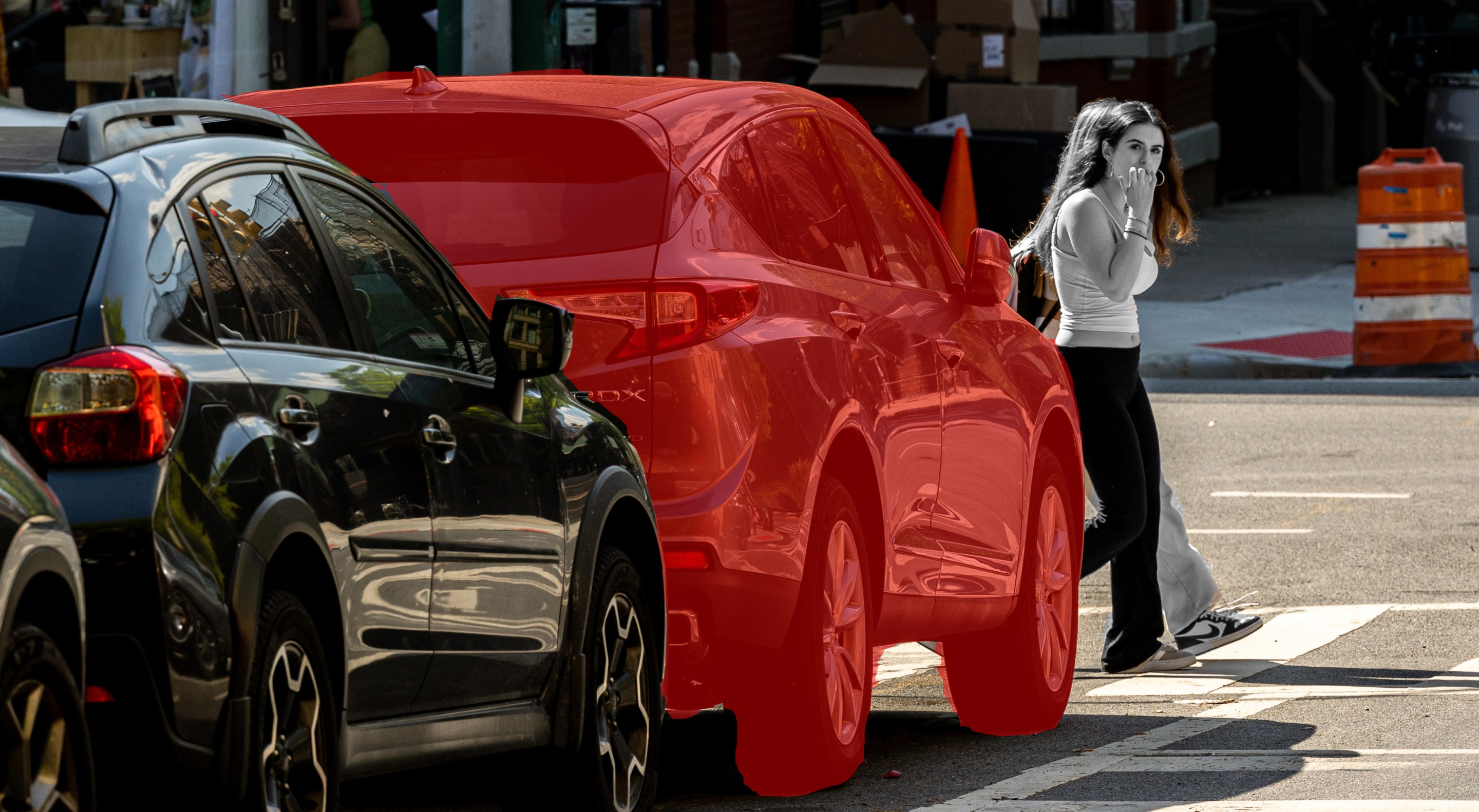A recent study used by the city Department of Transportation to temper growing enthusiasm for increasing driver visibility by banning parking around intersections has a fatal flaw.
Expect DOT to parade the report’s findings at Monday's City Council hearing on Intro. 1138, Council Member Julie Won’s bill to ban parking within 20 feet of every intersection in the five boroughs. But DOT’s analysis used “hydrant zones” and bus stops as a proxy for daylighting without physical barriers to conclude so-called “unhardened” daylighting could adversely impact safety. In theory, these spaces replicate the effects of universal daylighting. In reality, they are chronically blocked and fraught with conflict between road users.
Put simply: Hydrant zones and bus stops are not a suitable stand-in for universal daylighting, and this analysis of them should not inform decisions related to daylighting implementation in New York City.
While parking within 15 feet of a fire hydrant is illegal, this is not a guarantee that the law is obeyed. To the contrary, blocked hydrants are a serious problem.
In February, fire officials blamed the death of a Brooklyn man in a fire in part on illegally parked cars blocking fire hydrants. The incident even prompted FDNY Commissioner Robert Tucker to take to social media to call attention to the severity of the problem. A February 28 press release issued by the FDNY expanded on this, saying, “Seconds count in an emergency, and blocking a fire hydrant is a selfish decision that can kill people and endanger FDNY members as they work to save residents.” The release came after another illegally blocked fire hydrant hindered FDNY life-saving efforts — the second time in three days. On March 13, a blocked hydrant again slowed FDNY response, contributing to the destruction of a row of stores in the Bronx. Tucker subsequently reiterated that this is a dangerously common problem saying, “We are talking about parking by fire hydrants way too much these days,” and that this is “a recipe for death.”
This outcry over illegal parking near fire hydrants suggests that their location is not a reliable surrogate for unhardened daylighting.
Testing this theory, I conducted a brief on-the-ground survey of hydrant zones in Crown Heights, Brooklyn. My Sunday morning examination of 45 hydrant zones along four miles of streets identified 26 of them — nearly 70 percent — blocked by illegally parked cars, erasing whatever daylighting benefits they may have offered.
Bus stops are similarly not analogous to daylighting — and could feasibly skew DOT’s data by being less safe than a truly daylighted intersection. Unlike daylighted space, bus stops exist to be occupied by vehicles. They add points of conflict with pedestrians, cyclists and other motor vehicles as buses move in and out of traffic to pick up riders, sometimes crossing bike lanes to do so. A bus that is boarding or waiting for a light to change blocks visibility for pedestrians and other road users, achieving the complete opposite of daylighting.
These characteristics create inherent safety concerns. It would not be surprising if bus stops saw higher rates of crashes and injuries because of the complex road behaviors that occur at them. This is the case in other cities as well. In Atlanta, for example, nearly half of crashes involving pedestrians in Fulton, Clayton and DeKalb Counties occurred within 150 feet of a bus stop in 2023. Yet DOT made no mention of these complications in its report, despite using crash data from bus stops to cast doubt on the value of Won’s universal daylighting bill.
DOT also claimed that unhardened daylighting encourages drivers to cut corners and turn more quickly, and that this leads to more pedestrian injuries — an argument repeated in mainstream media coverage of its report. But this was just a theory. The report contains no research into turn speeds. And in the 43 states where universal daylighting is the law, this "fast turns" issue is not prevalent.
It’s possible DOT is daunted by such a large city-wide policy change. New York City is enormous, with around 40,000 intersections and millions of parking spaces. It makes sense that the agency has some reticence and reluctance here since universal daylighting represents a considerable shift. However, as leading street safety experts have said, this change makes it easier to improve safety.
DOT officials may counter that advocates have confirmation bias and disagree with the report only because it contradicts their preexisting beliefs about universal daylighting. But the evidence against universal daylighting simply fails to stand up to scrutiny as shown by examining the study conditions. Fire hydrants are chronically blocked in New York City, and bus stops, which are designed for use by large vehicles, inherently reduce visibility for pedestrians. If DOT wants to discredit the campaign for universal daylighting, it will need much stronger proof. Until then, daylighting remains a proven safety policy with a strong track record, and it is this success that should guide New York City to take it citywide.






